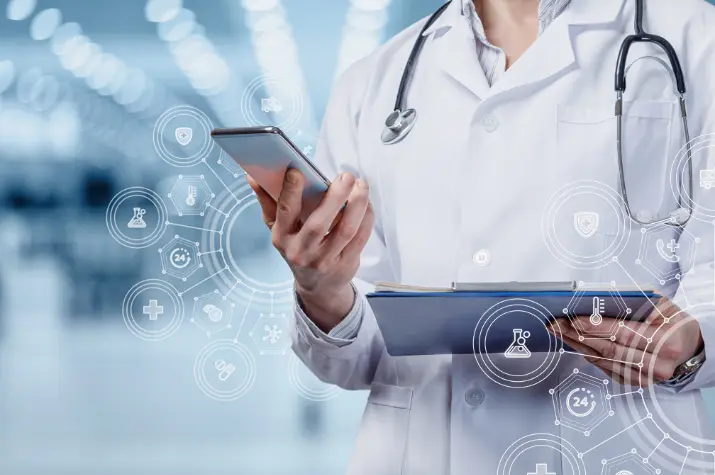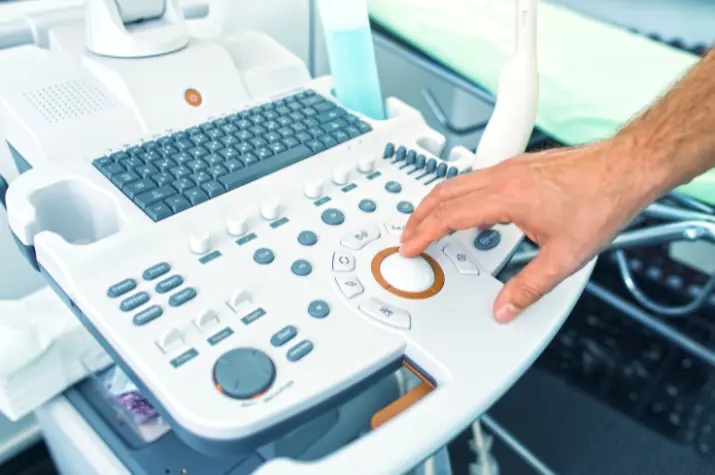
Medical devices have come a long way since their inception, revolutionizing the way healthcare is delivered and transforming patient outcomes.
Innovation, technological breakthroughs, and a deeper understanding of human physiology have all contributed to the growth of medical devices, which range from simple diagnostic gadgets to intricate surgical equipment.
This exploration will delve into the fascinating journey of medical devices, tracing their evolution and examining their implementation in modern healthcare settings.
You may also like:
- Medical Ultrasonography: How Does It Work and Why You Might Need It?
- How Technology Is Rapidly Changing the Healthcare Landscape
- How Telemedicine Works & Supports the Healthcare System?
The Early Origins of Medical Devices:
The history of medical devices dates back thousands of years to the time of ancient civilizations when diagnosis and treatment were conducted using crude instruments and methods.
For instance, surgical needles, forceps, and scalpels are among the medical implements mentioned in ancient Egyptian papyrus scrolls. But it wasn’t until the Middle Ages, when more advanced tools and methods were developed, that medical device technology saw substantial breakthroughs.
This period saw the discovery of novel anatomy by academics and medical professionals like Avicenna and Galen, which opened the door for the creation of innovative medical techniques and equipment.
With the development of tools like the stethoscope and microscope, which transformed the medical world, we saw additional advancements in medical device innovation throughout the Renaissance.
The Modern Era of Medical Devices:

The 20th century saw unparalleled progressions in the field of medical devices, driven by rapid advances in research, engineering, and production. For instance, the development of the X-ray machine in the late 1800s completely changed diagnostic imaging and the way illnesses were identified and managed. The variety and intricacy of medical equipment increased along with technology.
Modern medical technology, such as insulin pumps and pacemakers, as well as robotic surgery systems and MRI scanners, have ushered in a new age of precision medicine, individualized healthcare, and better patient outcomes.
Medical gadgets are now essential to almost every facet of healthcare, including monitoring, rehabilitation, and diagnosis and treatment.
The Role of ERP Software in Medical Device Manufacturing:
Manufacturers are resorting to innovative technological solutions to assure regulatory compliance and simplify their operations, given the growing complexity and volume of medical devices.
Medical device enterprise resource planning (ERP) software has become a potent tool for controlling all facets of the manufacturing process, from quality assurance and regulatory compliance to inventory control and production scheduling. ERP software for medical devices helps factories increase productivity, save costs, and improve product quality by integrating data and operations across divisions.
ERP software also gives firms instantaneous access to critical performance metrics, enabling them to react swiftly to changing market circumstances and make well-informed choices.
Medical Device Installation in Healthcare Settings:

IT specialists, administrators, and physicians must work together and carefully plan, coordinate, and collaborate when implementing medical devices in healthcare settings.
Proper implementation, which includes selecting the right equipment, training staff, and integrating them into existing processes, is critical to maximizing the benefits of medical devices and providing the best possible patient care.
Strict regulatory regulations and standards must also be followed by healthcare organizations to guarantee the effectiveness, safety, and quality of medical equipment.
Healthcare companies may increase patient safety, optimize the deployment process, and boost operational efficiency by using ERP software for medical equipment.
Addressing Challenges and Future Trends:
While medical devices have made significant strides in improving patient care and outcomes, they also present challenges and opportunities for innovation.
Healthcare institutions and manufacturers are increasingly focusing on cybersecurity issues as medical equipment becomes more technologically advanced and networked.
The development of wearable technology and customized treatment is also influencing how medical equipment will look in the future, with a focus on data analytics, remote monitoring, and patient involvement.
The future of medical devices offers the potential for transforming healthcare delivery and enhancing patient outcomes globally by tackling these issues and embracing new trends.
Conclusion
In conclusion, the evolution and implementation of medical devices have transformed the landscape of healthcare, providing clinicians with powerful tools to diagnose, treat, and manage a wide range of medical conditions.
Medical devices have been essential in improving patient care and the practice of medicine worldwide from the dawn of civilization to the present. There are many opportunities for improving patient care, increasing efficiency, and influencing the future of healthcare delivery in the field of medical devices as long as technology keeps developing and new inventions come to market.
With the help of ERP software for medical devices and a commitment to innovation and collaboration, we can continue to push the boundaries of what is possible and usher in a new era of healthcare excellence.
About The Author:
Stacey Smith is a freelance health writer. She is passionate about writing about women’s health, dental health, diabetes, endocrinology, and nutrition and provides in-depth features on the latest in health news for medical clinics and health magazines.




